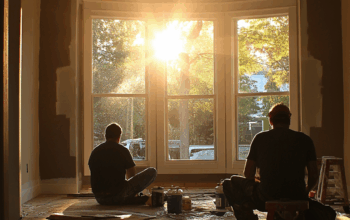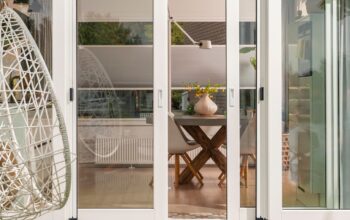For years, basements had a bad reputation – dark, damp, and best left for storing boxes you’ll never open. But did you know that adding the right basement windows can increase a home’s resale value by up to 10% and, in many cases, turn it into legal living space? With smart design choices, basements can transform into some of the most inviting rooms in the house: a cozy family lounge, a home office, even a legal bedroom. And at the heart of that transformation is one crucial feature – the basement window.
This isn’t just about aesthetics. The right window makes a basement safer, more comfortable, and, in many cases, legally habitable. It can turn an underground room into a bright, airy space and even boost your home’s value. Skip it, and you’re left with a decorated cave you can’t sleep in – at least, not legally.
What Makes a Basement Window Special?
A basement window sits partially or fully below ground, which brings some unique challenges. You’ll often need a window well – a sturdy, open space that holds back the soil, lets in daylight, and allows the window to open properly.
If your basement is a living space – especially a bedroom – one of these windows must be an egress window. That means it’s big enough for someone to climb out during an emergency, and big enough for firefighters to climb in. Building codes set the exact minimum size, and meeting those standards isn’t optional.
Why basement windows matter:
- Safety first: In an emergency, an egress window can be a lifesaver.
- Natural light: Sunlight changes everything – even underground spaces can feel warm and welcoming.
- Fresh air: Ventilation prevents musty odors and helps control humidity.
- Legal value: Without a code-compliant window, you can’t call a basement room a “bedroom” – and that means lost resale value.
Comparing Basement Window Types
| Type | How It Opens | Egress Potential | Security | Best Use Case |
| Hopper | Hinged at bottom, opens inward | Good, but clearance needed inside | Very secure | Bedrooms or living spaces needing airflow |
| Awning | Hinged at top, opens outward | Limited – often too small for egress | Secure | Rainy climates, utility rooms |
| Sliding | Moves horizontally on a track | Good if large enough | Moderate – lock quality matters | Wide wall openings |
| Casement | Side hinge, swings outward like a door | Excellent – full opening space | Very secure | Best choice for egress windows |
Choosing the Right Basement Window
1. Know Your Codes
In Canada, the National Building Code requires a clear opening at least 380 mm (15 in.) in both height and width. Local rules can be stricter, so always double-check before you buy (National Building Code of Canada – 2020 PDF).
2. Pick the Right Material
Basements mean moisture – choose a frame that can handle it.
- Vinyl: Affordable, moisture-proof, and low-maintenance.
- Fiberglass: Strong, stable, and won’t rot or warp.
- Wood: Only if it’s properly clad in a waterproof material – otherwise, it’s asking for trouble.
3. Plan the Window Well
Even the best egress window is useless if you can’t get out of the well. Codes typically require at least 760 mm (30 in.) clearance from the wall. Wells deeper than 44 inches usually need a permanent ladder.
Mistakes to Avoid
- Skipping code compliance: It’s unsafe, illegal, and expensive to fix later.
- Bad installation: Water leaks in a basement can ruin more than just your floor. Hire someone who knows foundation work.
- No drainage plan: Without gravel and proper drainage, your well could turn into a pond – inside your basement.
- Tiny windows: If it doesn’t let in enough light or air, you’ve missed the point.
Blending Safety with Style
Egress windows don’t have to look industrial. Designers now use stone, brick, or timber to turn window wells into mini garden terraces. Inside, you can frame the window with trim, add plants, or use deep sills for extra storage or decor. Instead of hiding it, make it a feature – a bright focal point that makes your basement feel like part of the home, not an afterthought.
FAQ – Real Homeowner Questions
1. What’s the safest basement window if I need an emergency exit?
If you’re turning a basement into a bedroom or living space, safety has to come first. Casement windows are the go-to choice here because they swing open like a door, giving you the largest, easiest path out. In a fire or other emergency, that wide opening isn’t just convenient – it could save your life.
2. How can I improve ventilation without breaking code?
Even in non-bedroom spots, adding a hopper or sliding window boosts airflow and reduces moisture risks – though casements open the most fully, sliders let in light and meet code in tight spaces.
3. Do I really need to worry about drainage in the window well?
Absolutely. Without proper drainage, that nice new window well can turn into a mini swimming pool during the first heavy rain – and guess where the water goes next? Right into your basement. Adding gravel at the bottom and a proper drain keeps things dry and saves you from costly water damage and mold headaches later.
4. Can basement windows actually look good, or are they always clunky?
They can definitely look good. These days, designers use stone, brick, or even wood to make window wells feel more like a garden terrace than a concrete pit. Inside, you can add trim, plants, or deep sills to make the window a cozy feature instead of something you try to hide. It’s safety and style working together.
Final Thought
A basement window does a lot of heavy lifting – safety, comfort, light, and legal compliance. Choose wisely, install it right, and it will transform your basement into a safe, livable, and inviting part of your home.




